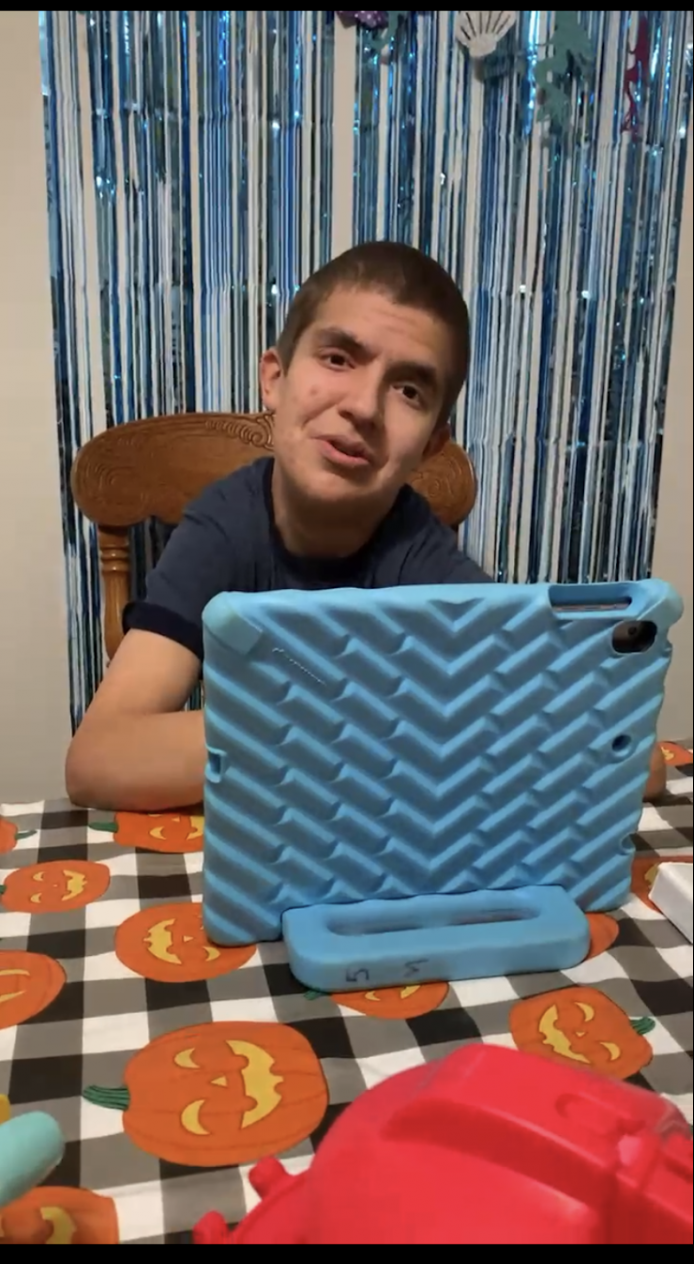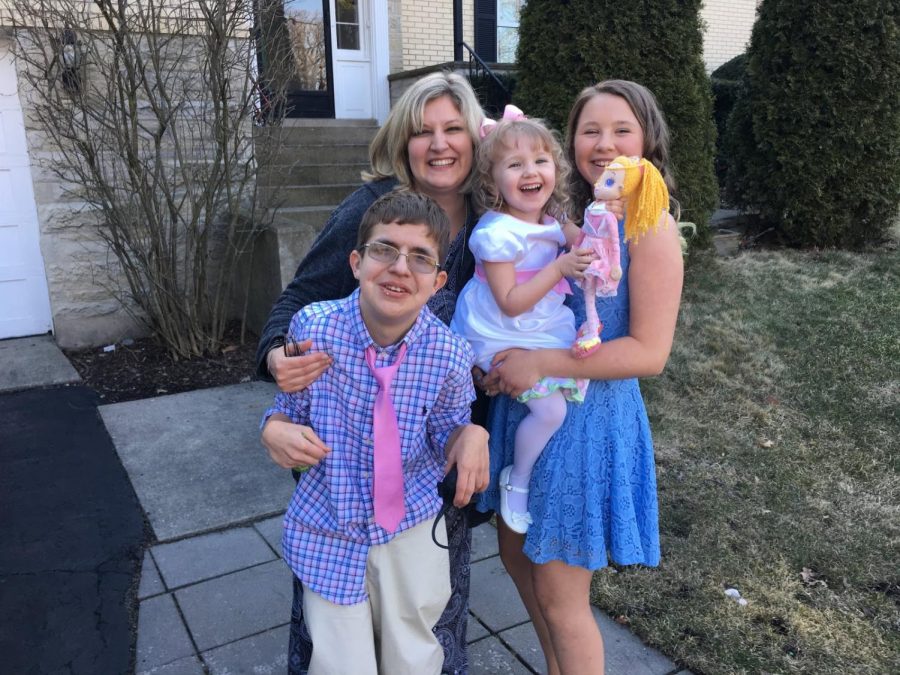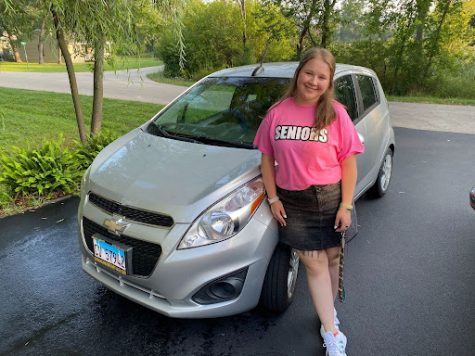Dylan’s Story
The special needs community has been hit especially hard by remote learning
Courtesy of the Crossley family
Like many families that include children with special needs, the Crossley family has struggled with the challenges of remote learning.
March 16, 2021
The challenges of remote learning during COVID hit the special needs community especially hard.
Many of them have health risks that can be compromised by COVID. Special education also relies heavily on one-one-one work with teachers, which makes online teaching extremely challenging.
The issue of how to best help special needs students during remote learning hits close to home for a lot of reasons. The biggest one is that I have a cousin who has special needs, and I consider him to be my best friend. His name is Dylan, and he is the strongest person I know.
Dylan, 19, was born with Costello Syndrome, which is caused by a mutation in the HRAS gene. The mutation causes cells to grow and divide more than they do in the average body. It can delay intellectual development and cause problems with the heart, muscles, bones, skin, brain, and spinal cord. There is no cure for Costello Syndrome.
Dylan has been through countless surgeries, hospital visits, and doctors appointments. He’s even survived cancer. But the only thing he ever complains about is not being able to have a sleepover. He truly is an exceptional person.

Because of his condition, Dylan, who lives in Indiana, has attended special classes all of his life. He has always expressed a hatred for school. When quarantine originally started in March of 2020, his school shifted to remote learning (much to his enjoyment).
My aunt Lori Crossley was worried that Dylan no longer saw his peers. His school offered a whole class Zoom once a week, but few students attended. For any child with special needs, social and intellectual development go hand in hand; you can’t have one without the other. Because of his health, Dylan can’t risk being in the building.
“He doesn’t even really get to work with his teacher, either. I really am his teacher at this point,” she said.
Perhaps the greatest injustice to special education students is the lack of attention given to the quality of their work.
“It really is a terrible way for anyone, especially a special education student, to learn. Both my husband and I work full time, and we also have a 6-year-old daughter doing in person school. I’m lucky enough to be able to work from home, but I can’t spend as much time with Dylan as he needs,” Crossley said.
Many special needs parents balance the heavy schedule of parenting and working. While my aunt works full time, she is expected to teach Dylan full time as well. Because of his condition, Dylan needs almost constant support and supervision when doing schoolwork. “I’m up into the next morning everyday trying to finish my work,” said Crossley.
It may not seem challenging to teach material that is “easy” to the average student, but that isn’t always the case.
“Dylan gets a lot of work that is honestly inappropriate for him. He was just barely understanding how to count change, and they gave him algebra. There was no way he could understand that, especially with no instruction. It took me 30 minutes to solve the problem, how is he supposed to?” she explained.
When I asked my cousin if he likes school, he said “Not really, I’d rather be watching the Wiggles.” Unfortunately, Dylan’s experience with online school is not uncommon. Children around the US are lacking the education and support they need to in order to get most out of their education.
For children with special needs, it’s been a long battle to find the same quality of education given to other students. As of 2020, nearly seven million disabled children made up 14% of all students enrolled in public school, according to the National Center for Education Statistics. While there are many schools in the U.S. specifically designed for teaching them, it can lead to a lack of social skill development.
A benefit of having both groups of students in the same building (like at LFHS) is the valuable interaction. Special education students develop the needed interaction with kids their age, and the other students learn how to interact with those who are different from them.
Lucky for special education students at LFHS, they have the full support of our staff and community.
Our staff have spared no effort in order to continue the special education program. Students are welcome to attend in person, and are in constant contact with their teachers. They have plenty of opportunities to interact with other students both in the building and from home. Our school has been doing a great job helping students from all backgrounds through these hard times. As a participating student in the Integrated Wellness program, playing games with our students is the highlight of my day, and theirs too.
At too many other schools, special needs children have become just another victim of COVID.








Mara Dukats • Mar 19, 2021 at 3:27 pm
Thank you for sharing Dylan’s story, Kayla! This is a thoughtful and beautifully written piece!